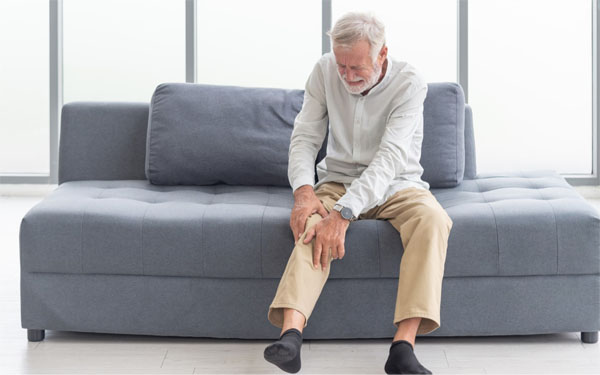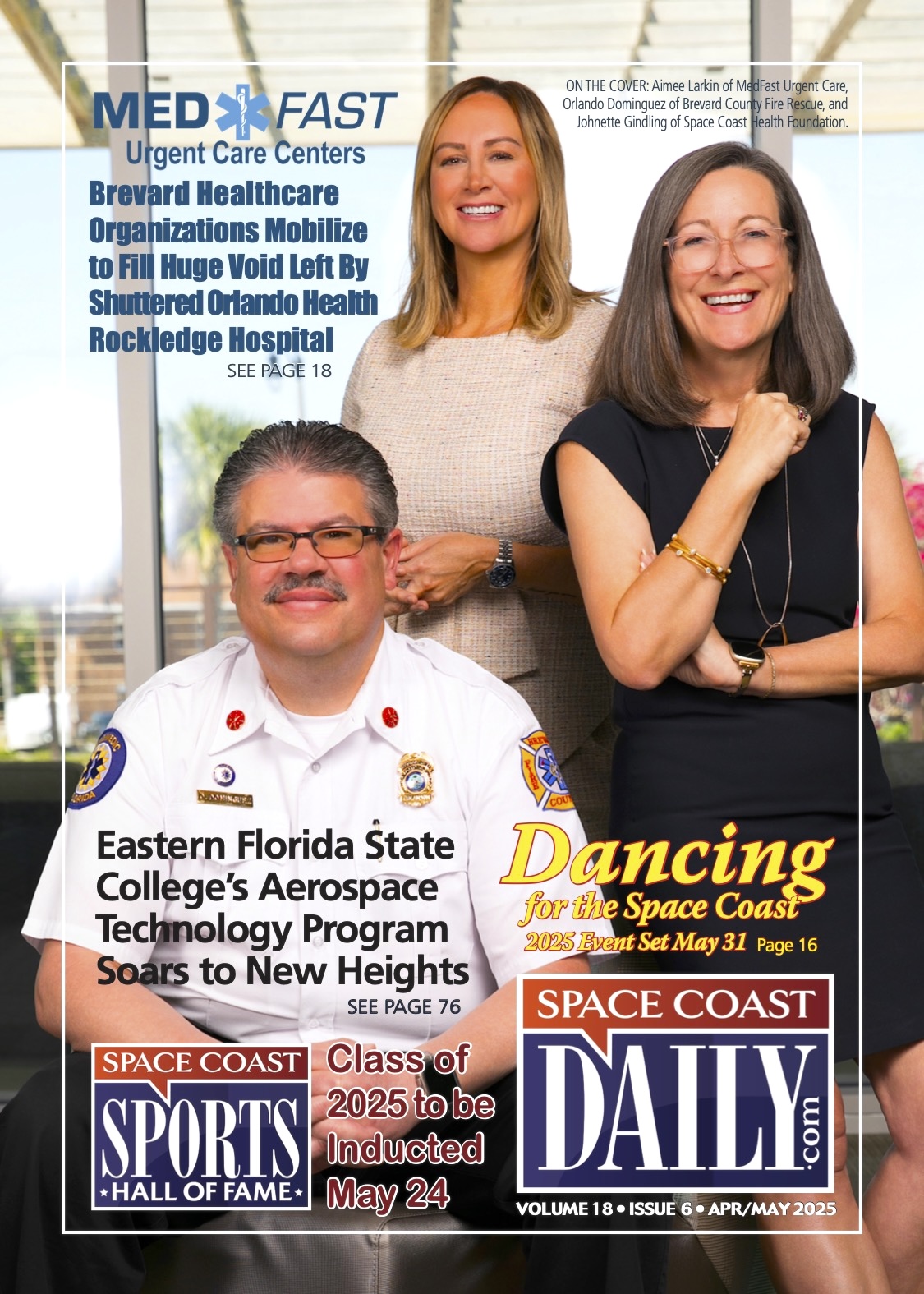How To Manage Common Types of Arthritis: A Patient’s Guide to Treatment Options
By Space Coast Daily // May 7, 2025

Arthritis is more than just occasional joint pain—it comes with a complex group of conditions that can disrupt daily activities, limit mobility, and diminish quality of life. From the sharp, sudden agony of a gout attack to the persistent stiffness of rheumatoid arthritis, symptoms vary from person to person. Yet, one thing remains constant: early intervention is key to preventing long-term joint damage.
While there’s no universal cure for arthritis, there are various effective treatment options to manage pain and slow disease progression. This guide explores the most common forms of arthritis, their symptoms, and the best strategies to stay active and pain-free. Keep reading to learn more.
Understanding Arthritis and Its Common Types
Did you know that there are over 100 types of arthritis? This inflammatory disease attacks the joints by mistake, leading to inflammation, chronic pain, and stiffness. The most common forms include:
■ Osteoarthritis (Degenerative Arthritis): The leading cause of osteoarthritis is wear and tear on weight-bearing joints like knees and hips. Symptoms of osteoarthritis include joint stiffness, bone spurs, and limited movement.
■ Rheumatoid Arthritis (RA): In rheumatoid arthritis, the body’s defense system malfunctions and attacks its joint tissues, particularly the protective lining around joints. Patients afflicted by this type of disease often experience morning stiffness, swollen joints, and widespread pain.
■ Psoriatic Arthritis: Linked to skin diseases like psoriasis, this inflammatory arthritis causes scaly skin patches, finger joint pain, and nail changes.
■ Gout: Caused by excess uric acid forming uric acid crystals in joints, leading to sudden gout flares and severe pain.
■ Juvenile Arthritis: This affects children, with juvenile rheumatoid arthritis being the most common condition in this group.
Other types include reactive arthritis, infectious arthritis, and post-traumatic arthritis (triggered by joint injury).
Diagnosing Arthritis: Tests and Medical History
Accurate diagnosis is the first step toward effective arthritis treatment. Since symptoms often overlap between different types, doctors combine methods to pinpoint the specific condition and rule out other possibilities.
To determine the type of arthritis, doctors may use:
■ Blood tests to check for inflammatory markers, rheumatoid factor, and uric acid levels
■ Imaging scans (X-rays, MRIs, or ultrasounds) to assess joint damage, bone spurs, or cartilage loss
■ Joint fluid analysis to detect crystals (gout) or infection (infectious arthritis)
■ Physical examination of affected joints for swelling, warmth, and range of motion
■ Review of medical and family history to identify genetic risk factors or previous joint injuries
These test results give your doctor the information they need to create a customized plan that addresses your symptoms while working to prevent further joint damage.
Arthritis Treatment Options for Pain Relief and Mobility
While there’s no cure for osteoarthritis or most arthritis diseases, treatments focus on reducing arthritis pain, preventing long-term joint damage, and improving daily activities.
Here are some examples of arthritis treatments:
1. Medications for Arthritis Management
The correct pharmaceutical approach depends on your specific type of arthritis, symptom severity, and overall health. Doctors typically recommend one or more of these medication options:
■ Pain relievers (acetaminophen) for mild to moderate arthritis pain management
■ Non-steroidal anti-inflammatory drugs (NSAIDs) like ibuprofen or naproxen to reduce joint inflammation and pain
■ Disease-modifying antirheumatic drugs (DMARDs) such as methotrexate to slow rheumatoid arthritis progression
■ Biologic response modifiers (TNF inhibitors, IL-6 inhibitors) that target specific immune system pathways
■ Corticosteroids (prednisone) for short-term control of severe inflammation
■ Topical analgesics (creams, gels) for localized joint pain relief
■ Antigout medications (allopurinol, colchicine) to prevent and treat gout attacks
Your doctor will closely track your response to medications and make adjustments as needed to achieve the best results with the fewest side effects.

2. Physical and Occupational Therapy for Arthritis Management
Therapeutic interventions are essential components of comprehensive arthritis care. They help patients maintain mobility while protecting vulnerable joints. These specialized therapies focus on improving function and adapting daily activities to reduce pain and prevent further joint damage.
Key therapeutic approaches include:
■ Customized exercise programs incorporating low-impact activities like swimming or cycling to strengthen supporting muscles without stressing joints
■ Targeted range-of-motion exercises to improve flexibility and combat stiffness in affected joints
■ Manual therapy techniques, including gentle joint mobilizations to enhance movement and reduce discomfort
■ Assistive device training for proper use of canes, walkers, or splints to offload weight from damaged joints
■ Energy conservation strategies to help patients pace activities and minimize fatigue
■ Joint protection education teaches modified techniques for daily tasks like cooking, dressing, and household chores.
■ Pain management modalities, including therapeutic heat/cold applications and TENS units
■ Home exercise programs with clear instructions for maintaining progress between therapy sessions
A skilled physical or occupational therapist will tailor these interventions to your specific arthritis type, symptom severity, and personal goals, ensuring you can maintain your independence and quality of life.
3. Lifestyle Modifications for Arthritis Management
Making strategic lifestyle adjustments can significantly improve arthritis symptoms and slow disease progression. These changes work synergistically with medical treatments to enhance joint health and overall well-being.
Key lifestyle modifications include:
■ Weight management: Maintaining a healthy BMI reduces stress on weight-bearing joints (knees/hips) – every 1lb lost removes 4lbs of pressure from knees
■ Anti-inflammatory nutrition: Emphasizing omega-3s (fatty fish), antioxidants (berries), and spices (turmeric) while reducing processed foods and sugars
■ Low-impact physical activity: 150 minutes weekly of joint-friendly exercises like aquatic therapy, tai chi, or recumbent cycling
■ Joint-smart movement strategies: Learning proper body mechanics for lifting, bending, and prolonged standing/sitting
■ Stress reduction techniques: Incorporating mindfulness, deep breathing, or gentle yoga to lower inflammation-promoting cortisol
■ Sleep hygiene optimization: Ensuring seven to nine hours of quality sleep to facilitate tissue repair and pain modulation
■ Smoking cessation: Eliminating tobacco to improve circulation and reduce inflammatory markers
■ Environmental adaptations: Using ergonomic tools, jar openers, and reachers to minimize joint strain during daily tasks
These modifications are most effective when implemented gradually and consistently, becoming sustainable habits rather than temporary fixes. Even small, incremental changes can yield noticeable improvements in pain levels and functional ability over time.
4. Surgical Interventions for Advanced Arthritis
For patients who don’t respond adequately to medication and therapy, surgery can offer solutions to regain movement and ease persistent pain. Doctors usually suggest these procedures when arthritis has progressed to the point where it substantially interferes with a person’s ability to function normally.
Common surgical approaches include:
■ Joint Replacement (Arthroplasty): Gold standard for end-stage arthritis, particularly in knees and hips, using durable metal/plastic components
■ Joint Fusion (Arthrodesis): Permanently connects bones in severely damaged smaller joints (wrists/ankles) to eliminate painful movement
■ Osteotomy: Realigns bones in younger patients to redistribute weight away from damaged joint areas
■ Synovectomy: Removal of inflamed synovial tissue in persistent rheumatoid arthritis cases
■ Cartilage Restoration: Emerging techniques like MACI (matrix-induced autologous chondrocyte implantation) for focal defects
■ Arthroscopic Debridement: Minimally invasive cleaning of loose cartilage/bone fragments in early-moderate osteoarthritis
While surgery can dramatically improve mobility, it represents a significant decision that should be made collaboratively with your orthopedic surgeon, weighing potential benefits against risks and recovery demands.
Conclusion
Managing arthritis involves a mix of medical care, physical activity, and arthritis community support. By staying proactive, people with arthritis can maintain an active life despite chronic pain.
If you experience persistent joint pain, muscle stiffness, or knee pain, consult a doctor for an arthritis report and personalized arthritis care plan. Early treatment helps prevent permanent damage and keeps you moving comfortably.












